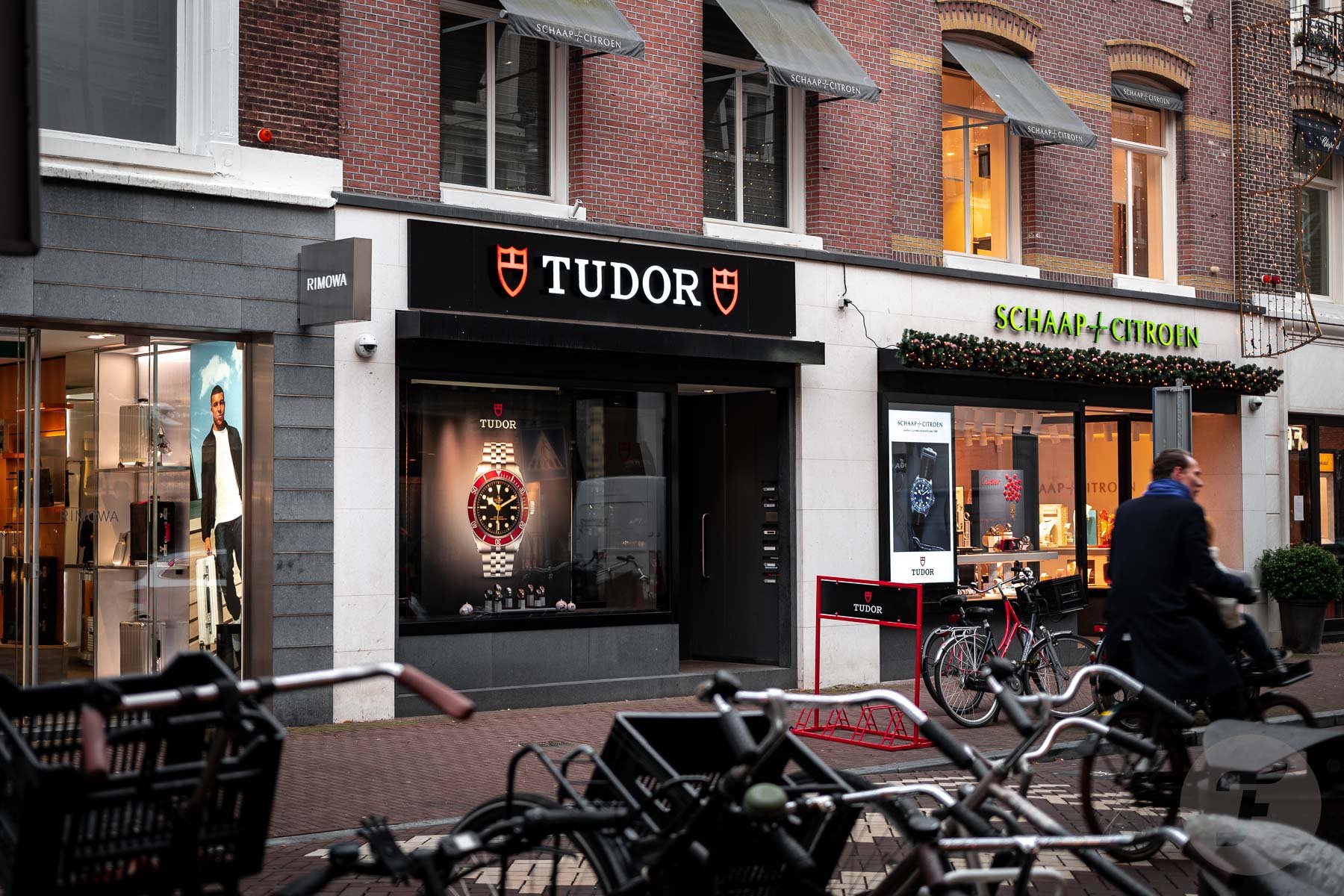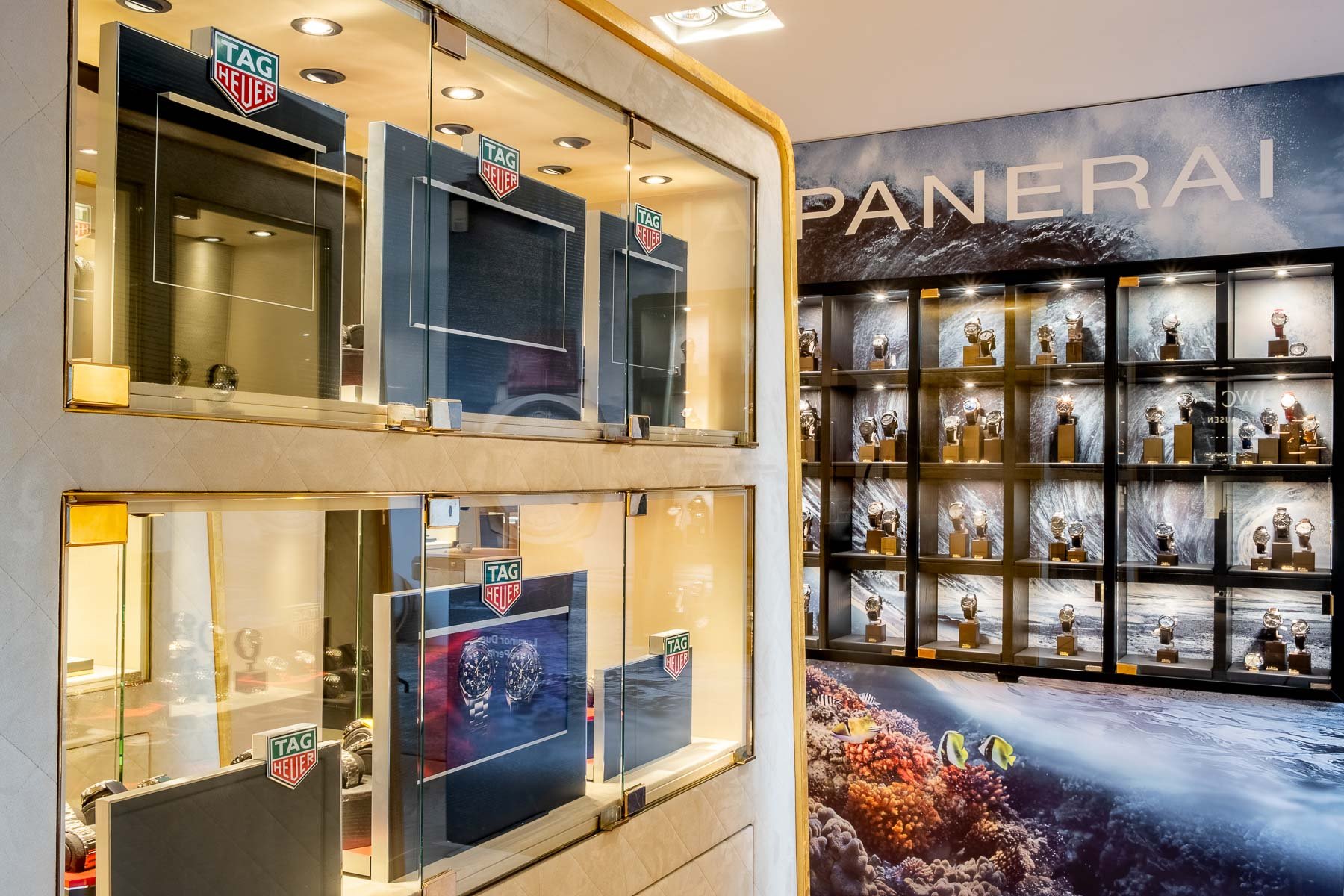Is There A Future For The Brick-And-Mortar Multi-Brand Watch Dealer?
It’s no secret that the number of authorized multi-brand dealers for big watch companies has decreased significantly in the last decade. Only the large(r) chains, such as Wempe, Bucherer, Watches of Switzerland, and some local ones, seem to keep their portfolios secure with the big groups and brands.
The traditional “mom-and-pop” jewelers are vanishing from the retail landscape. These small, often family-owned stores were the go-to places for generations of families when there was something to celebrate with jewelry or a watch. Brands, especially the bigger ones, concluded that these smaller stores can often not offer the luxurious atmosphere and surroundings that they feel they deserve. Consequently, the big brands have disappeared or are still disappearing from many traditional multi-brand stores. Now mono-brand boutiques are popping up in major cities, often as franchises belonging to one of the bigger chains. You may think you’re entering a boutique run by brand X due to the storefront, typical (branded) interior style, and decoration. In reality, however, a bigger chain of multi-brand stores usually operates the boutique.
Brand boutiques versus multi-brand stores
At a boutique, whether managed by the brand in question or one of the multi-brand chains, there is only room for one brand, and you can see most of its collection. By contrast, at the traditional stores, the offerings often only consisted of a curated selection of models because the stores had to do this for a dozen or so brands (and finance it).
Multi-brand watch dealers in smaller cities and villages receive(d) competition from larger stores and mono-brand boutiques in bigger towns and must deal with online dealers and platforms. While it might seem logical to present themselves on some of the market platforms as well, such as Chrono24, brands often do not allow them to do so. Many traditional multi-brand watch dealers disappeared in the last few years, or at least the big brands disappeared from their portfolios. You have probably noticed they shifted focus to smaller or independent brands, started selling pre-owned watches, or both.
It’s an interesting trend, and at first, I thought it would come in waves. It’s like large corporations changing their supporting departments from centralizing to decentralizing, from in-house to outsourcing or co-sourcing constructions, and back to doing things themselves again. But giving it a bit more thought, I am not so sure we will ever go back to multi-brand stores carrying the big brands, even in smaller cities. It feels that this ship has sailed because, in addition to mono-brand boutiques, there’s stiff competition from online shopping. It is a competition that traditional authorized dealers can’t win. Or can they?
House of Pertijs
This past April, I visited one of these multi-brand stores in a smaller city in the Netherlands. I am talking about House of Pertijs in Breda, which has a population of 180,000 people. To my surprise, the store still carries brands like Breitling, Cartier, Omega, Panerai, and Tudor. All of these are brands that made a move toward mono-brand boutiques or limited themselves to major chain retailers.
It feels a bit like the introduction of an Asterix and Obelix comic album. To refresh your memory, as the introduction of every Asterix album goes: “The year is 50 BC. Gaul is entirely occupied by the Romans. Well, not entirely… One small village of indomitable Gauls still holds out against the invaders. And life is not easy for the Roman legionaries who garrison the fortified camps of Totorum, Aquarium, Laudanum, and Compendium…”
It wouldn’t look off in New York’s SoHo
But although it has been in the hands of one family for 65 years, don’t think House of Pertijs in Breda is the typical mom-and-pop store. It’s located just outside the city’s center and surrounded by other boutiques. It’s the SoHo of the city, basically. The store, with its modern yet very stylish interior, also looks like it could have been in New York’s popular area. Aside from the typical Cartier and IWC corners inside the store as well as a Panerai “wall,” the most eye-catching object is a huge gold bar. The gold bar closes after business hours and turns into a massive vault. During opening hours, the gold bar transforms into a row of several brand displays.
I sat down with Jean-Paul Langeler, managing director of House of Pertijs. He has worked at the store for nearly 18 years, and when Paul Pertijs, the previous owner, passed away in 2022, Jean-Paul was appointed managing director, while the ownership transferred to Paul’s kids. Jean-Paul shared his love for watches with me, and pointed out that he loves Tudor (he was wearing a 41mm Black Bay) and IWC, especially the Portugieser 7-Days.
Customers are knowledgable
Langeler told me that House of Pertijs has a strong focus on female customers. The collections are carefully selected for the ladies, and the interior is also a bit softer and more friendly with its materials and colors to ensure ladies feel just as comfortable and welcome as gentlemen. But, there’s enough masculinity to be found as well, looking at the Panerai wall and the IWC corner with (wine) bar. That’s wonderful, of course, but I always get the strong impression that many purchases are led by price. It’s the complaint from many brick-and-mortar shops. Customers come in and try a watch (or whatever else), leave the shop, and go home to order it somewhere online for a cheaper price. If one is to believe all the interviews with owners of shops that have gone bust, this behavior is killing retail.
According to Langeler, big brand names are important to typical customers who want to buy a watch. This has to do with the online presence of these brands on social media and publications like Fratello. Most people know what they want when they enter the store, more so than in the past when advice was needed from the sales representative. So if it’s not due to the price or advice, how do brick-and-mortar shops survive?
It’s the experience that counts
Langeler said it is all about the experience. He added that the relationship with the brands should be more than just that of the reseller. It needs to be a partnership. House of Pertijs is keen on giving customers a fantastic shopping experience with great attention to detail. According to Langeler, the staff must ensure that people feel at home, comfortable, and not pushed to make a decision. On top of that, the store regularly invites clients to events it is hosting to make them feel extra welcome and appreciated.
Another critical aspect is after-sales service. House of Pertijs has a dedicated service department and is trying to keep 4–5 weeks as the maximum to have a service performed on a watch.
When I asked him about the competition from online and gray-market dealers, Langeler was very clear. Occasionally, a client will ask the store to sell a watch for a lower (gray-market) price, but House of Pertijs refuses to do this. The company’s focus is on service and having the best buying experience. Langeler also explained that buying from the gray market sometimes results in issues with non-activated warranty cards. But he also says that many of today’s customers, often entrepreneurs themselves, understand that running a business is also a matter of live and let live and letting someone do business properly. He also adds that price fighting has become less frequent recently.
“Online” is not a dirty word
Being a brick-and-mortar store doesn’t prevent House of Pertijs from having an online presence. But although the store has a fresh and up-to-date website, I can’t imagine that it is more than an electronic business card. House of Pertijs uses Chrono24 as a platform for offering pre-owned pieces. The store provides this as a service to its clients, offering the watches in consignment, for example.
Lastly, Langeler let me know that people who come in to buy a watch, despite their good knowledge these days, are always presented with some alternatives to their initial picks. Men are often very focused on certain brands or models, but Langeler said the specifications on paper/screen have tricked them more than once. You need to try a watch and see how it looks and feels on your wrist rather than disregarding (or selecting) a watch based only on its specs. This is sound advice, and it’s also what we experience here at Fratello.
The buying experience will be connected to the watch forever
I walked out of the store with some new and different perspectives on brick-and-mortar shops as well as family-owned multi-brand stores. However, I am also not oblivious to the fact that House of Pertijs has the advantages of its location and very loyal customers in the area. In Amsterdam, a family-owned store surrounded by brand boutiques would most certainly have to play a different game.
Still, I was impressed by the store and the knowledge the folks there had about the brands and watches they offer (and the ones they don’t). I can’t deny that I’d rather have a great buying experience in a location like this, on a sofa with a nice chat about watches and perhaps a glass of wine or champagne, than click some buttons on a website and wait for the courier to arrive a day or a few days later. The fun of wearing the watch would be the same, but the memory of the buying experience will last as well.
What also surprised me was the number of watches per brand that House of Pertijs carried. The store can’t compete with a full collection like a brand boutique, and perhaps the boutique exclusives are the dearly missed models, but there was an impressive lineup per brand nonetheless. And the store probably has to offer so much because I don’t think a 50-minute (or more) drive to a larger city with a brand boutique will hold people back if they truly want something.
Not all stores tick these boxes
I can see the advantages of shopping online, which I do sometimes for watches, fountain pens, clothing, etc. But that also doesn’t stop me from buying at brick-and-mortar shops, which indeed often provide a nice experience or memory. And then, if you are invited to nice events on top, it gives you an incentive to come back as a returning customer. And, I am not so worried about the big chain stores when it comes to multi-brand dealers. These also often have franchise mono-brand boutiques, which helps the brands who don’t have or want to set-up something by themselves in a specific city or country. Whether a family-owned jeweler can survive largely depends on how it treats its customers, its location and surroundings, and how far it can go when it comes to service. Whether customers are willing to pay more because they like the store and its staff is also an important factor, of course. House of Pertijs in Breda ticks those boxes, it seems, but many don’t and lose out to the brand boutiques and chain stores.
A big thank you to Jean-Paul Langeler for being incredibly transparent and open to this conversation. If you’re in the area, make sure to visit the House of Pertijs store in Breda.
This will be a recurring topic, for sure, and we’re curious to hear what you think about the smaller (perhaps more personal) watch dealers versus the brand boutiques or chain stores. Let us know in the comments.










